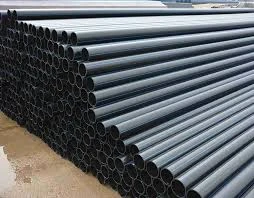Dec . 03, 2024 17:35 Back to list
pp board
The Rise of PP Board A Versatile Material for Modern Applications
In today's fast-paced world, the need for efficient, cost-effective, and sustainable materials is paramount. Among the numerous options available, PP (Polypropylene) board emerges as a versatile and innovative solution that meets various industrial and commercial demands. This article explores the characteristics, advantages, and applications of PP board, highlighting its significance in modern manufacturing and design.
PP board is made from polypropylene, a thermoplastic polymer known for its durability, lightweight nature, and excellent chemical resistance. This remarkable material is produced through an extrusion process, resulting in rigid, sheet-like forms that can be easily manipulated for various uses. One of the most appealing features of PP board is its ability to withstand harsh environmental conditions, making it suitable for both indoor and outdoor applications.
One of the primary advantages of PP board is its lightweight quality. This property allows for ease of handling, reducing transportation costs and improving efficiency during installation. Additionally, PP board is incredibly durable, able to resist impact, moisture, and a wide range of chemicals. This robustness makes it an ideal choice for industries such as construction, automotive, and packaging, where the material is subjected to rigorous conditions.
.
One of the most notable applications of PP board is in the signage industry. Due to its lightweight and weather-resistant properties, it is widely used for outdoor advertising, promotional displays, and informational signage. The ability to print high-quality graphics directly onto PP board also adds to its appeal, enabling vibrant, eye-catching designs that attract consumers' attention.
pp board

In the construction sector, PP board is increasingly used for temporary walls, partitions, and protective barriers. Its resistance to moisture makes it suitable for various applications, such as in restaurants, construction sites, and other environments where cleanliness and hygiene are crucial. Additionally, PP board can be customized in thickness, color, and size, offering flexibility to meet specific project requirements.
The packaging industry benefits significantly from the use of PP board as well. With its sturdy yet lightweight properties, it is an excellent choice for creating boxes, containers, and other packaging solutions that require strength without adding unnecessary weight. The ability to produce custom shapes and sizes also means that businesses can create tailored packaging solutions that optimize space and reduce shipping costs.
Furthermore, PP board has found applications in the furniture manufacturing sector. Designers are increasingly incorporating this material into modern furniture designs due to its adaptability and contemporary aesthetic. Whether used in tables, chairs, or cabinetry, PP board can provide a sleek, modern look while maintaining functionality and durability.
As industries continue to evolve, the versatility of PP board positions it as a frontrunner in material solutions. Its lightweight construction, robustness, and eco-friendly credentials make it an ideal choice across various sectors. From signage to packaging and construction, PP board is proving to be a practical solution for modern-day challenges.
In conclusion, the increasing adoption of PP board reflects a growing awareness of sustainable materials that do not compromise on quality or performance. As the demand for innovative and efficient materials continues to rise, PP board stands out as a key player in shaping the future of manufacturing and design. With its broad range of applications and benefits, PP board is poised to play a significant role in various industries for years to come.
-
High-Quality PPR Pipes and Fittings Durable ERA PPR & PVC PPR Solutions
NewsJul.08,2025
-
Black HDPE Cutting Board - Durable, Non-Porous & Food Safe HDPE Plastic Cutting Board
NewsJul.08,2025
-
High-Quality CPVC Panel Durable HDPE & PVC Panels Supplier
NewsJul.08,2025
-
Double PE Welding Rod Supplier - High Strength, Durable & Versatile Welding Solutions
NewsJul.07,2025
-
High-Quality PVC-O Pipe Supplier Durable 75mm PVC Pipe & Connections Leading PVC Pipe Company
NewsJul.07,2025
-
HDPE Drainage Pipe Supplier – Durable & Corrosion-Resistant Solutions
NewsJul.06,2025

